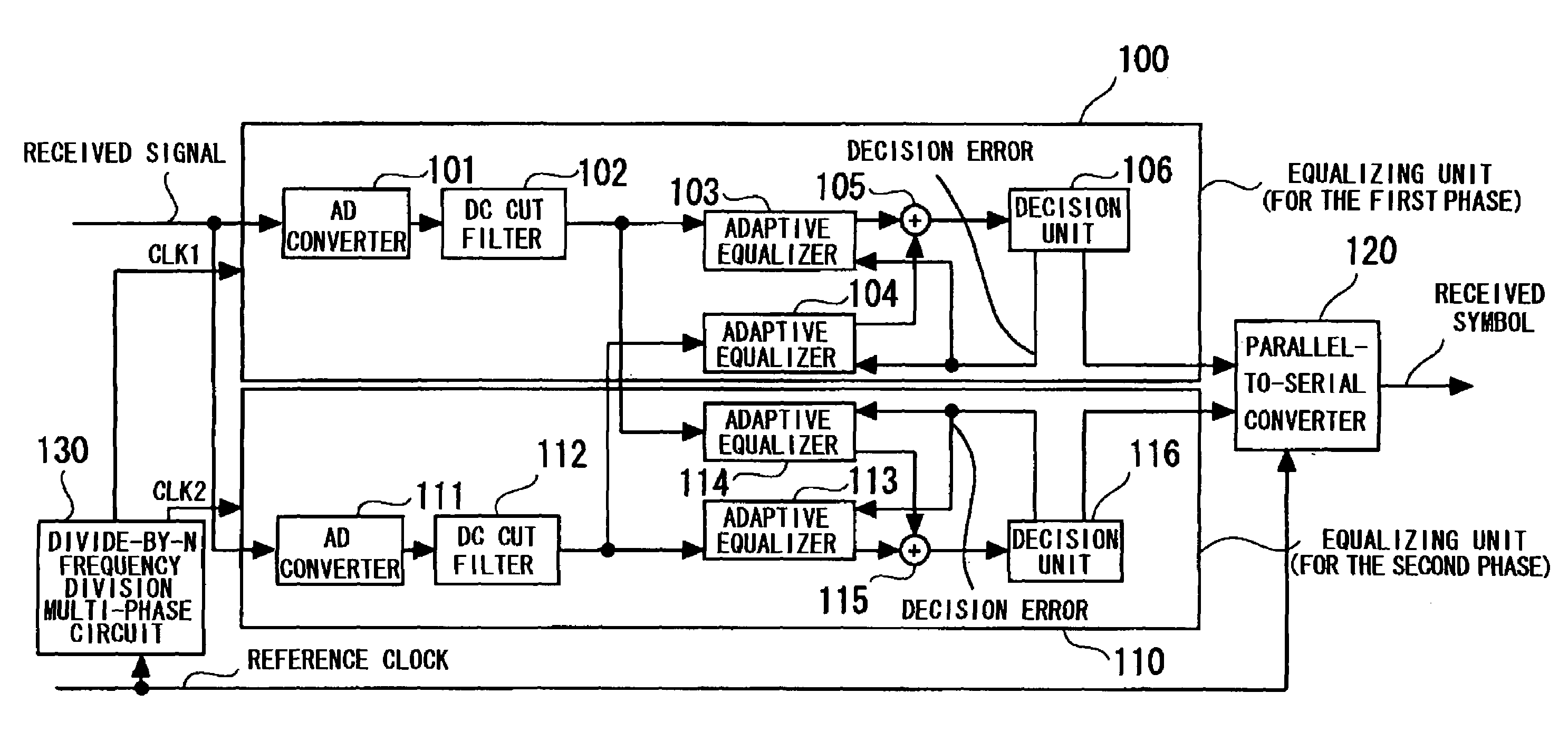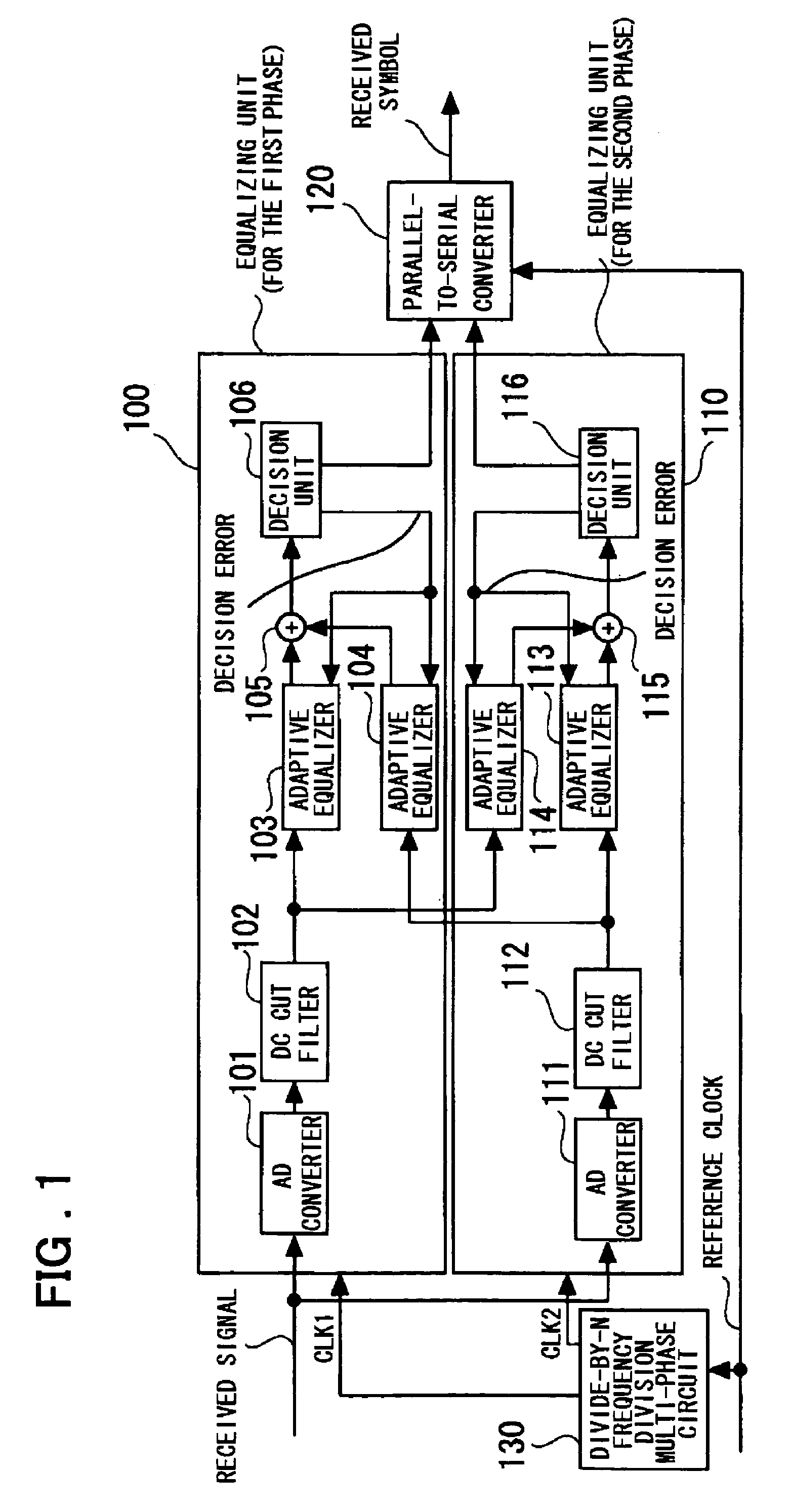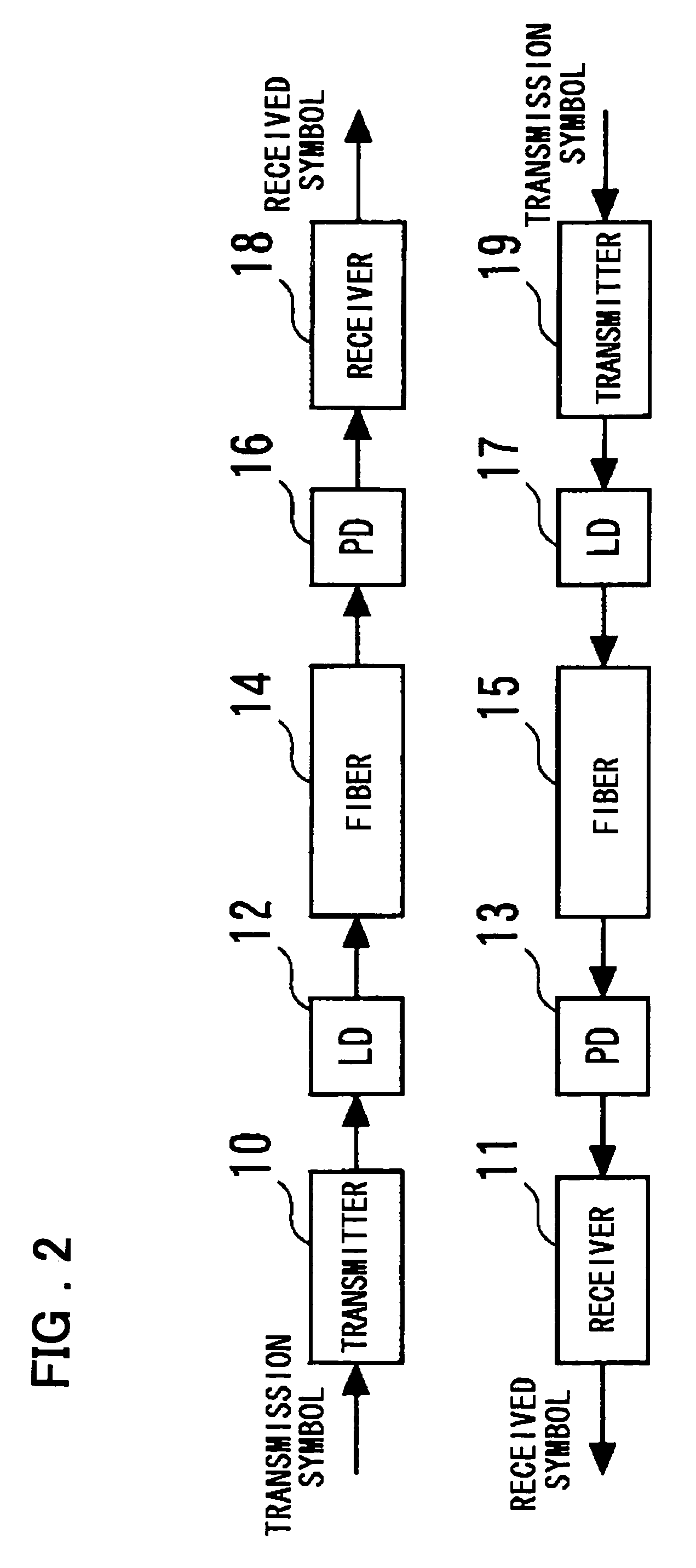Receiving device and analog-to-digital conversion device
a technology of analog-to-digital conversion and receiving device, which is applied in the direction of pulse manipulation, line-transmission details, pulse technique, etc., can solve the problems of increasing the degree of difficulty in design, bringing about increased cost, and difficulty in downsizing circuits and simplifying processing, so as to facilitate delay design in view of timing, reduce power consumption, and increase circuit size
- Summary
- Abstract
- Description
- Claims
- Application Information
AI Technical Summary
Benefits of technology
Problems solved by technology
Method used
Image
Examples
first embodiment
[0086]FIG. 1 is a diagram showing a configuration of a receiver according to the present invention. The receiver given below is employed as a receiver shown in FIGS. 2 and 3, for example.
[0087]Referring to FIG. 1, the receiver in the present embodiment includes the two AD converters 101 and 111, DC (direct-current) cut filters 102 and 112, the adaptive equalizers 103 and 104, the adaptive equalizers 113 and 114, adders 105 and 115, the decision units 106 and 116, a parallel-to-serial converter 120, and the divide-by-N frequency division multi-phase circuit 130. The AD converters 101 and 111 receive a received analog signal input and convert the analog signal to digital signals in response to the sampling clocks CLK1 and CLK2 of mutually different phases, for output. The DC cut filters 102 and 112 input the digital signals output from the two AD converters 101 and 111, respectively. The adaptive equalizers 103 and 104 input the outputs of the DC cut filters 102 and 112, respectively,...
second embodiment
[0117]Referring to FIG. 7, the present embodiment employs the decision feedback equalizer 141 as in the second embodiment shown in FIG. 6, and further includes echo canceling units 150 and 160.
[0118]A serial-to-parallel converter 170 driven by the reference clock serially inputs even-numbered and odd-numbered transmission symbols one by one from a transmitter not shown, for conversion to parallel data. The serial-to-parallel converter 170 supplies a common transmission symbol (an even-numbered symbol) to adaptive equalizers (adaptive filters) 151 and 152, and supplies a common transmission symbol (an odd-numbered symbol) to adaptive equalizers (adaptive filters) 161 and 162.
[0119]The outputs of the adaptive equalizers 151 and 152 both driven by the sampling clock signal CLK2 supplied to an equalizing unit 110B are added by an adder 153, and the result of addition is supplied to one input to an adder 107 of the equalizing unit 100B. The outputs of the adaptive equalizers 161 and 162 ...
fourth embodiment
[0123]Next, the present invention will be described. FIG. 8 is a diagram showing a specific example to which the present invention has been applied, and is the diagram showing a configuration of a receiver having an MIMO (Multiple-Input Multiple-Output) filter configuration. Referring to FIG. 8, the DC cut filters are omitted.
[0124]Referring to FIG. 8, a transmitter (TX) 401 transmits a symbol to a line 402 at a frequency fs. A time-interleaved AD conversion device (TI-ADC) 400 in a receiver is constituted from two AD converters connected in parallel, for sampling even-numbered data and odd-numbered data, respectively, in response to the sampling clock signal of mutually different phases and a frequency of fs / 2 obtained by dividing the fs by two. Each of the two AD converters includes a sampler 403 / 406, an adder 404 / 407 for adding the output of the sampler 403 / 406 to a DC offset (Offset 1 / Offset 2), and an amplifier 405 / 408 for inputting the output of the adder 404 / 407. The offset (...
PUM
 Login to View More
Login to View More Abstract
Description
Claims
Application Information
 Login to View More
Login to View More - R&D
- Intellectual Property
- Life Sciences
- Materials
- Tech Scout
- Unparalleled Data Quality
- Higher Quality Content
- 60% Fewer Hallucinations
Browse by: Latest US Patents, China's latest patents, Technical Efficacy Thesaurus, Application Domain, Technology Topic, Popular Technical Reports.
© 2025 PatSnap. All rights reserved.Legal|Privacy policy|Modern Slavery Act Transparency Statement|Sitemap|About US| Contact US: help@patsnap.com



